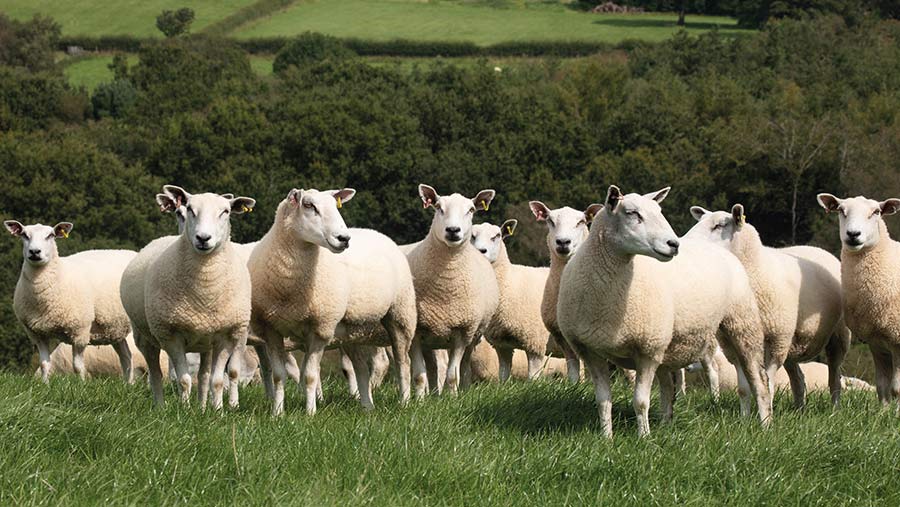Tips to manage worm challenges and benefit lamb growth
 © Tim Scrivener
© Tim Scrivener Farmers must learn to “clean-graze” lambs to reduce worm burdens, rather than routinely relying on anthelmintics.
This was the message from Matt Colston, who said farmers need to relearn the art of grazing practised by their ancestors.
“We have had 60 years of really cheap, really effective broad-spectrum wormers, so farmers have turned to the bottle,” said Matt, who works as ruminant technical consultant for Elanco.
See also: What to do when worm reinfection limits lamb growth rates
Avoid the challenge
Speaking at the National Sheep Association’s Sheep Conference last month, he said avoiding worm challenges in the first place is always more beneficial for lamb growth.
Moredun research shows that weight gains were improved in lambs where worm burdens were managed at lower levels, compared with lambs that were drenched every three weeks routinely and grazed on high-challenge areas.
This is because larvae affect the gut wall and can reduce appetite, he explained.
“We need to expose lambs to the right amount of worms so they develop immunity and can cope with the challenge, without it affecting growth rates.
“If you can do that, you have an animal that is fit to graze for the rest of its life.”
Managing new actives
Resistance to groups 1-3 wormers has been found in the UK.
But in other countries, overuse of newer actives, groups 4 and 5, means there are now farms with some worms that are resistant to all wormer groups.
“In New Zealand, [some] farmers continued with regular monthly blanket treatments. If we use the new actives like we have used the others, we will break them too,” Matt warned.
“Instead, farmers should be trying to avoid using wormers by managing worm populations and only treating lambs when they have to.”
Tips for managing worm challenges
- Lambs act as worm multipliers, while ewes are reducers after their first season.
- Post-weaning, graze with fit ewes following lambs. These will ingest larvae and kill them, reducing contamination.
- Silage or hay aftermaths that have not been grazed by lambs the same year are low risk.
- Forage crops are much lower risk than grass, as are herbal leys, because the worms cannot migrate up the stems as easily.
- Treat bought-in stock with a group 4 or group 5 active on hard standing and hold them off grass for one or two days. Then turn them out onto pasture that has been recently grazed to dilute worms that might have survived treatment.
- Carry out drench tests to ensure product efficacy.
- Use a “break-dose” treatment for lambs in the latter part of the grazing season (using the newer group 4 or 5 actives) to remove any worms that might have survived previous treatments.
- Carry out faecal egg sampling, ideally every two to three weeks, to monitor for worm burdens. To get average faecal egg counts, take “mob” samples – at least 10 individual samples (15-20 is better) from each group.
- These must be fresh.
- Alternatively, monitor weight gains of lambs every three weeks and only treat individual lambs that are not growing well enough.
